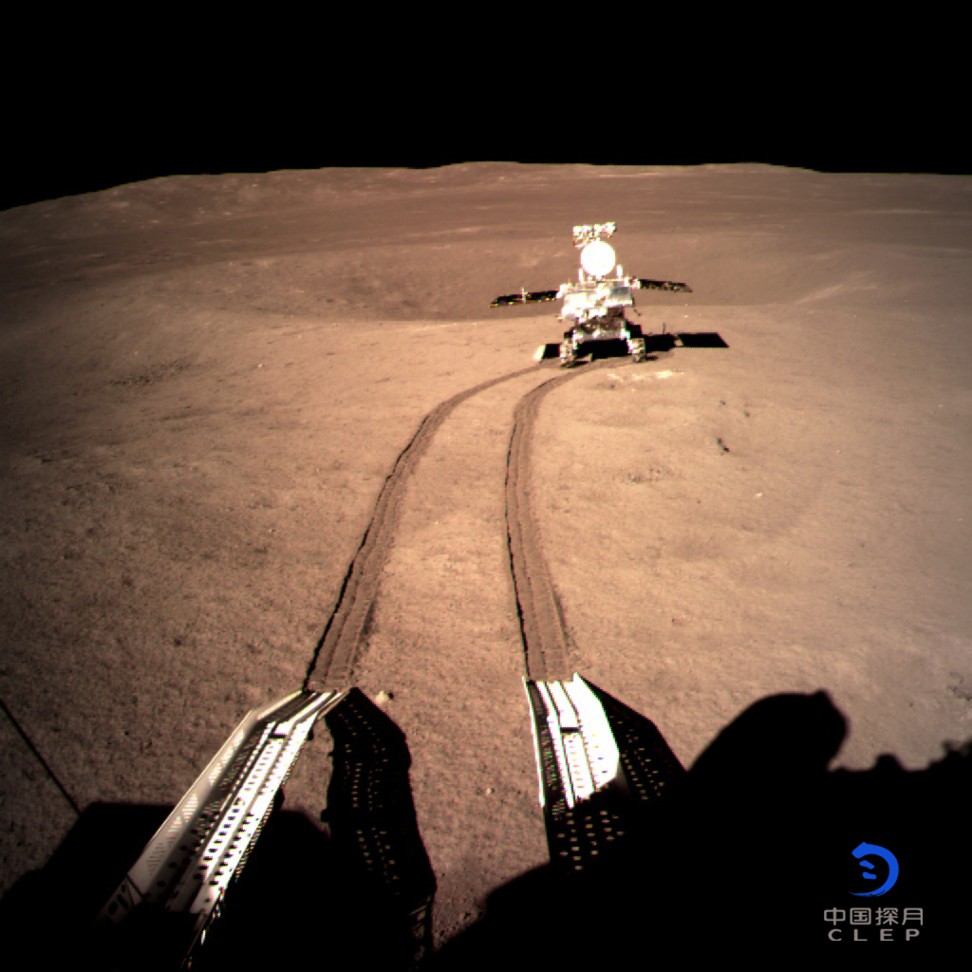
Critical roles played by Hong Kong researchers on China’s Chang’e 4 mission to far side of the moon
- Polytechnic University engineers helped design and make camera mount for moon lander
- Another team had hand in planning and selecting landing site – the 190km wide, 5km deep Von Karman crater

January 3 was a nerve-racking day for Professor Yung Kai-leung and his team at Polytechnic University’s industrial and systems engineering department.
The researchers had helped design and make the mission-critical camera mount for the world’s first landing on the far side of the moon, an undertaking by China’s Chang’e 4 space mission, which was declared a success on Friday more than a month after its launch.
Whether the multi-axis mount – built from a hardened aluminium alloy at the Hung Hom campus – would extend on the top of the moon lander, let alone swivel, would determine whether mankind captured panoramic images from the surface for the first time in history.

“It was early in the morning. We were so nervous we didn’t even dare to breathe,” the associate department head said. “But at the same time, it was also very boring. We had to watch the landing frame by frame.”
After many hours, it was finally confirmed in the evening that the system was functioning.
Last Thursday, the first ever panorama on the moon’s far side was taken, followed by a cosmic 360-degree “selfie”.
“It is actually very hard to build something that rotates in outer space as the extreme temperatures and high vacuum environment produce different reactions [from materials] than on Earth,” he said.
“Metal components could get stuck and fail to move. The lubricant could evaporate and stick to other instruments in the probe and cause problems.”
The state-of-the-art device was one of two advanced technologies from Hong Kong funded by the China Academy of Space Technology for the Chang’e 4 mission to the moon’s unexplored hemisphere.
PolyU was the only university from Hong Kong involved in this mission.
Also making important contributions was Dr Wu Bo, an associate professor of the university’s land surveying and geo-informatics department, whose team helped plan and select the landing site – the 190km wide, 5km deep Von Karman crater in the moon’s South Pole-Aitken basin.
Together with their mainland Chinese counterparts, they located the precise location of the lander and analysed the terrain and solar illumination conditions.

The team had gathered and assessed information on more than 400,000 craters, 20,000 boulders, terrain surface, gradients and rock abundance, narrowing down the potential landing regions to two. On the day of the landing, Wu’s team had three hours to decide which one to pick.
“We did it in 2½ hours,” he said.
“When I started my career in surveying, I never dreamed of taking part in space exploration missions. But all things are possible if we are bold.”
Professor Alex Wai Ping-kong, vice-president for research development at PolyU, said it was a rare opportunity for a Hong Kong university to contribute to a mission-critical component of a space expedition.
“Hong Kong has been talking a lot about re-industrialisation and innovation and … advanced manufacturing in recent years, we hope to contribute to that.”
Wai said the university would also be contributing to the Chang’e 5 mission as well as China’s planned Mars mission in 2020, though details were being kept strictly under wraps.
Because of a phenomenon called tidal locking, the far side of the moon never faced Earth and had never been observed until the first grainy photographs were taken by the Soviet Union’s Luna 3 mission in 1959.
Chang’e 4’s lunar rover has started to map the moon’s inner structures and analyse soil and rock samples.

It was also tasked with monitoring radio waves from across the cosmos and to conduct on-board tests on how plants held up in the moon’s weak gravity.
Last Friday, the China National Space Administration said the data collected so far had reached the control centre as intended, suggesting the mission objectives had been met.
The agency said the mission’s discoveries could help advance work towards a human return to the moon and perhaps plans for longer-term settlement there.
